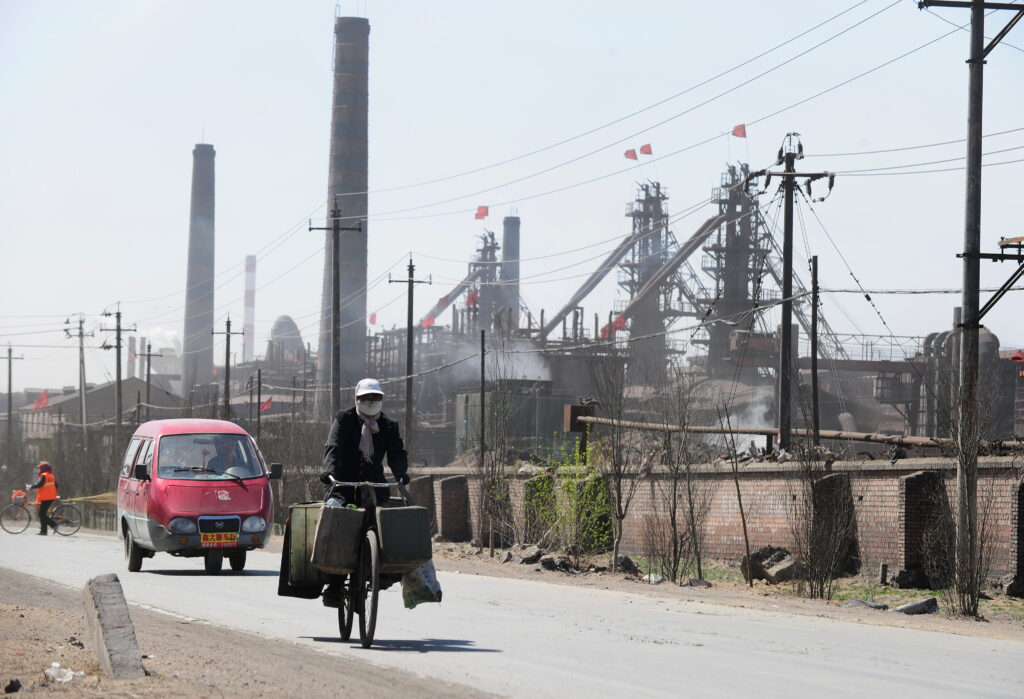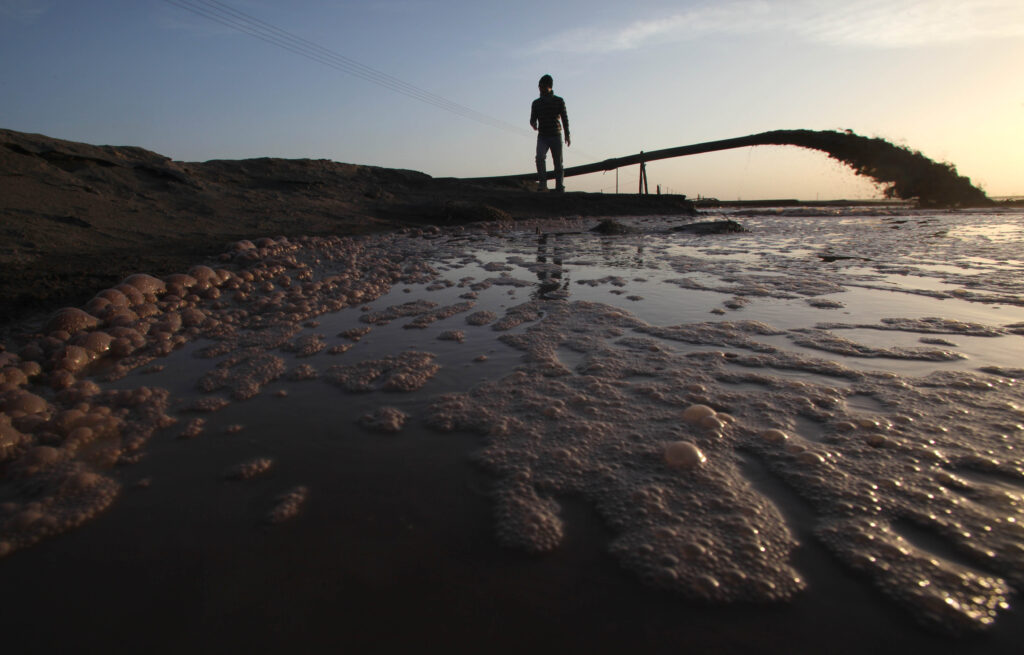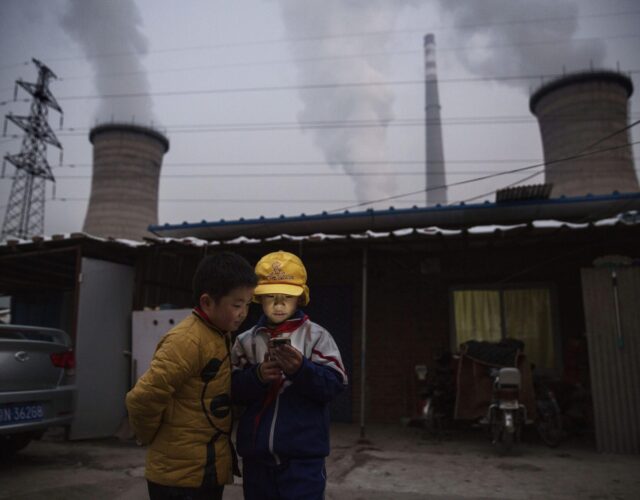“The Middle East has oil. China has rare earths.” So proclaimed Chinese leader Deng Xiaoping in 1992, describing the role he envisioned for rare earth metals in China’s emergence as an industrial superpower. By 2010 Deng’s vision was realized: China was producing 97% of the world’s rare earths. These metals were embedded in everyday consumer electronics, weapons systems, communications hardware, and “green” energy technologies.
While China observers worried that the country’s rare earths monopoly gave it powerful leverage in international affairs, the Chinese government had already begun to rethink its policies. Mining rare earths is a dirty business, and the harms of production were outweighing the benefits of being the world’s supplier. As both consumers and citizens we now have a golden opportunity to make rare earth production less environmentally destructive and less concentrated in one country.
What Are Rare Earths?
Despite the political, economic, and environmental significance of rare earths, you’re unlikely to notice them, even if you’re holding some of them in your hand right now. The rare earths are 17 metallic elements nestled in the middle of the periodic table, the lanthanide elements plus scandium and yttrium. They are usually alloyed with such metals as iron or aluminum. A little rare earth metal can dramatically enhance the properties of more familiar metals—making the alloys harder, stronger, lighter, and more magnetic or conductive. As a result rare earths are sometimes called “vitamins,” “spice metals,” or even “the MSG of industry.”
Erbium can amplify light at just the right wavelength for fiber-optic cables, thus boosting signals so information can flow around the world. Europium first put the red in color TV and remains important to energy-saving LED lights in our homes and businesses. A small amount of neodymium alloyed with iron and boron produces an extremely strong permanent magnet, used in smartphones, wind turbines, and electrical actuators inside guided missiles.
The label “rare earth” is an artifact of 18th-century mineralogy. Today we know some of the rare earth elements are no rarer than copper or lead geologically speaking, but the term persists because they are found in low concentrations and are exceptionally difficult to separate chemically. Ores always contain several rare earth elements mixed together, plus fluoride and varying amounts of radioactive thorium as well. The individual metals are separated through solvent extraction, a process that involves lots of heat, lots of acid, and hundreds or thousands of cycles. It’s not very efficient and leaves behind radioactive water, acidic waste gases, and toxic fluorine gas.
China’s Monopoly
Although good-quality rare earth deposits can be found on every continent, today China still leads production for two reasons: a series of sustained policy choices by its government starting four decades ago and a commitment to free trade by policy makers in the United States and other Western countries.
After Mao Zedong’s death in 1976, reform-minded leaders in China’s Communist Party took control. They began pushing through policies to promote manufacturing and global trade in order to secure political stability and establish domestic prosperity. Relatively rich deposits of rare earth metals in the Inner Mongolia autonomous region offered one resource among many the government could exploit. Between 1978 and 1995 China’s rare earth production increased by an average of 40% per year. Exports also increased rapidly during the 1990s, pushing prices lower worldwide. Rare earths became economical in many applications, such as for the anodes of nickel metal hydride batteries used in power tools and in motors controlling windows and door locks in automobiles. As prices dropped, producers outside China either went out of business or reduced their output sharply, unable to meet the so-called China price. The Mountain Pass Mine in California, which had been the world’s leading producer of rare earths since 1960, closed in 2002, partly because it couldn’t both meet California environmental standards and compete with Chinese companies, which were not constrained by similar regulations.

China’s policy makers also prioritized moving the country up the value chain of the rare earths industry, as Sophia Kalantzakos documented in her book China and the Geopolitics of Rare Earths. In 1995 two corporations owned by the Chinese government joined with American investors to buy Magnequench, an American firm that bought Chinese metal to make neodymium magnets widely used in hard drives. U.S. regulators approved this foreign investment with the provision that the company’s operations be kept in the United States for at least five years. Five years and one day later the factory was moved to China.
As Chinese officials actively sought to develop the country’s rare earths sector, part of a sustained industrial policy during the 1990s and 2000s, American policy makers were focused on opening global markets to U.S. products through free-trade agreements. As a result U.S.-based manufacturers moved overseas to take advantage of lower labor costs and lax environmental standards, while American consumers benefited from dramatically falling prices for high-tech goods and many other products.
Many American companies have thrived by harnessing cheap global manufacturing to deliver desirable products to American consumers. Apple manufactured its first Macintosh computers in Fremont, California, in 1983 but closed the factory in 1992; today’s iPhone box label reads, “Designed by Apple in California. Assembled in China.” The iPhone has become an iconic example of the magic made possible by rare earth metals. Yttrium and europium make the colors on its screen bright without draining the battery; permanent magnets made with neodymium, praseodymium, and dysprosium make the phone vibrate and enable loud, clear-sounding speakers that fit inside a thin case.
Rare earths are thus commodities enmeshed in a familiar story of globalization. But a race to the bottom that has given American consumers great products also implicates us in an exploitative, destructive system that simultaneously empowers a geopolitical rival and makes it seem impossible to see alternatives.
Environmental Costs and Cures
China recognizes the toxic environmental consequences of rare earth production. During the early development of the country’s rare earth industry, mining and production facilities released many pollutants, from radioactive wastewater to fluoride, which has led to cases of skeletal fluorosis. In some villages near rare earth separation facilities in Inner Mongolia, one resident in seven has cancer. At a recent public discussion in Los Angeles, cultural geographer Julie Klinger described what it’s like to do research in this area. Within a few weeks of arriving in Baotou, Inner Mongolia’s most populous city, she began to develop sores on her skin from the local water. During her fieldwork, conducted between 2010 and 2015, she learned how to distinguish long-term residents from recent arrivals by the presence or absence of skeletal deformities and skin lesions. Government restrictions on reporting and research make it hard to know how much pollution is produced by current practices, but planning documents show a government worried about the health effects of the industry’s wastewater on the Yellow River, which provides drinking water for 100 million people.
Is a future filled with pollution from rare earths inevitable? We can choose to follow the trajectory of the past decades: rich countries consume more and more cheap consumer goods and China retains dominance of the rare earth industry while offshoring the separations process to poorer countries whose people would have little political power to resist. Alternately, we could demand a new kind of industrial policy that supports greener production and fairer treatment of workers.
There are actions we can take as individuals. Find local electronics collection centers and recycle your obsolete devices. Choose to consume less. The greenest device is probably the one you already own. Buy products that do what you need in the simplest way possible. Repair or upgrade an existing device rather than replace it.
We can create more systemic change by acting as citizens rather than as consumers. If your area doesn’t have an electronics recycling program, attend a local government meeting and ask why not. And bring a friend. Manufacturers have restricted who is authorized to buy spare parts and repair damaged devices, and consumer activists have responded by calling for state or federal laws that protect the right to fix and modify the technologies you own. We can pressure our legislators to support these proposed “right to repair” laws.

But truly solving these problems will require expanding our imagination about collective action. We need to get back in the habit of thinking big about what can be achieved through organization and good governance. While big tech might like us to believe only private companies can solve big problems, history shows something different.
Take, for example, the cleanup of rivers and waterways in the United States. Water pollution was one of the major concerns that drove 20 million Americans to participate in events on the first Earth Day in 1970. Congress eventually responded to these concerns by rewriting the Clean Water Act in 1972. The amendments famously declared that all surface waters must be “fishable and swimmable” by 1983. Often forgotten is one of the mechanisms used to achieve that goal—a fund to subsidize construction of municipal water treatment plants. By the 1990s the billions spent through this fund had become “the largest federal public works program in history,” according to public policy expert Richard N. L. Andrews. Today wastewater treatment is something we take for granted, an expense we might notice as we pay our water bill but otherwise forgotten by the time we jump in a lake for a summer swim.
What would a rare earth industry that is environmentally sustainable and socially just look like? Federally funded research has already developed less toxic and more energy-efficient separation processes that could be used to recover rare earths from e-waste, but today’s “China price” makes these innovations commercially unviable. Consider, though, many consumers willingly pay more for fair-trade coffee and dolphin-safe tuna. Could a similar certification system work for products made with recycled rare earth metals? Or—perhaps more feasibly—some combination of subsidies and mandates by government could make domestic recycling operations competitive with foreign mining.
In the 1970s we figured out how to remediate our waterways; with current technology and knowledge the problems associated with rare earth production are equally solvable. And doing so would be considerably cheaper, since the rare earths are a fairly small industry. To find solutions, though, the U.S. government must renew its commitment to developing domestic industry and doing it in ways that treat workers fairly and manage pollution responsibly. First, people must learn about the problem and demand action. Then our policy makers need to commit the power of government to solving real geopolitical and technical problems, such as those surrounding the rare earths industry. In that sense the problem of rare earth elements is profound.




